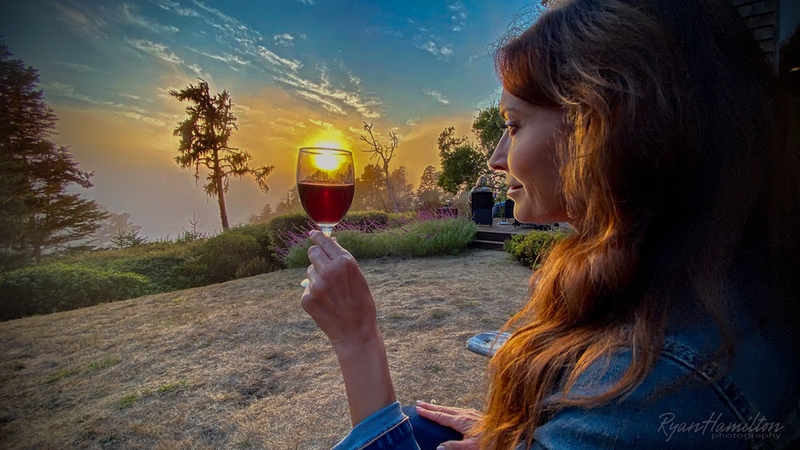
Where Wellness, Wine, and Redwoods are the Main Attractions
Rare is the destination that makes you sit in stillness, secure in its natural appeal— no need to overstimulate with over-the-top attractions and distractions. Mendocino County, California, is a down-to-earth destination with 90 miles of Pacific coastline, vineyards, ancient redwood forests, cannabis farms, and charming inns. This Northern California region resides between historic Highways 1 and 101, drawing visitors to unplug and reconnect. Here, Mother Nature challenges you to turn your gaze both outward and inward at once, connecting with earth while reconnecting with yourself.
I traveled to Mendocino to recalibrate and press the reset button on my life.
I’ve come to drink great Pinot Noirs from the source, meditate, hike the redwoods and coastline, and experience the hospitality of locals closely tied to the land. I flew into the San Francisco International Airport. I rented a car for the 3 ½ drive north along Highway 128, known as “the wine to waves byway,” winding through the hills and valleys of Napa and Sonoma and coastal mountains, passing wineries, farms, orchards, and redwood forests. I’m headed to the Inn at Newport Ranch, on Highway 1 in Fort Bragg, a 2000-acre nature preserve and working cattle ranch with an envious mile of private Pacific coastline populated with trails and lookout points.
I check into the Ranch House, one of 10 rooms at the Inn, furnished with redwood-crafted pieces, architectural elements, and artifacts that connect guests with the land, local artisans, and history. The owner, 94-year-old Will Jackson, aims to immerse his guests in the restorative power of nature while sharing his passion for the land and its people. Will purchased the property in the mid-’80s after seeing it advertised in a Wall Street Journal classified ad. He restored this former logging land, replanting redwood trees and native plants while creating picturesque lookout points framing the stunning topography.
I’m intrigued by this concept of a “view collector” and Will’s work to protect and nourish the land, building his view collection for guests. I want to experience its powerful, rejuvenating beauty, so I book a UTV tour of the property.
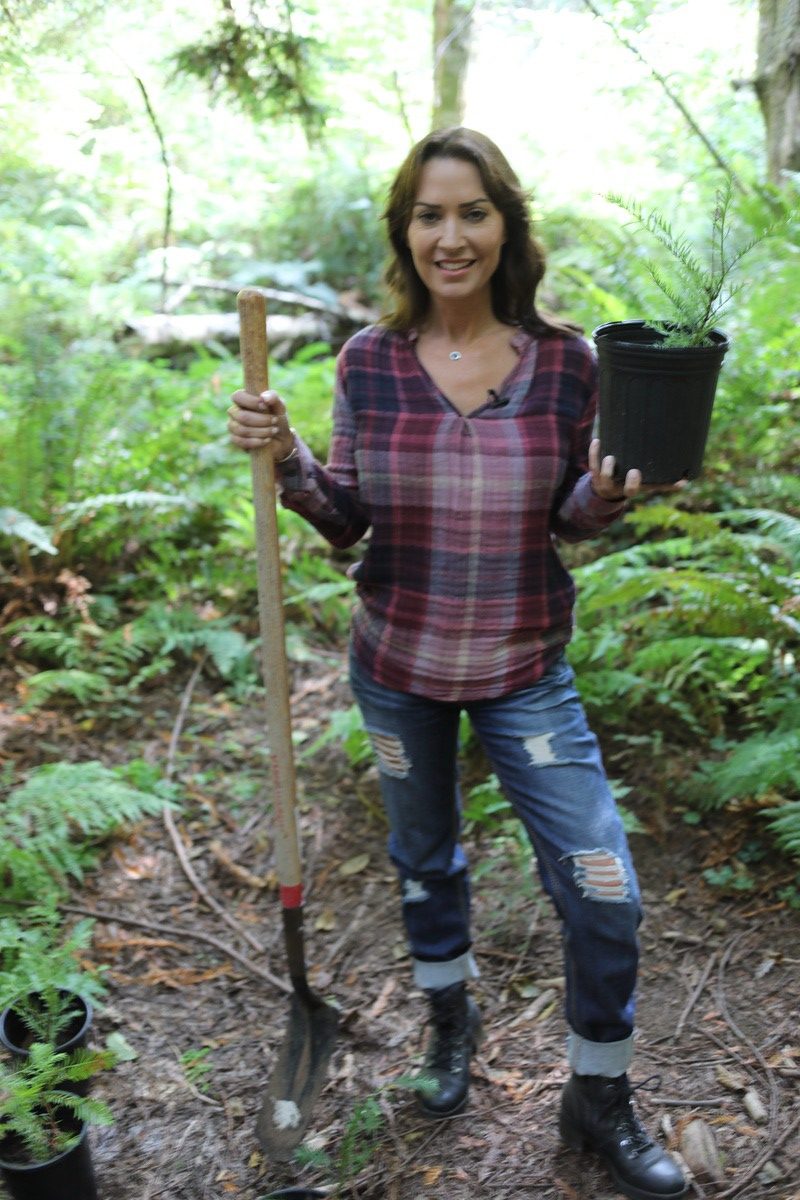
forest at the Inn at Newport Ranch.
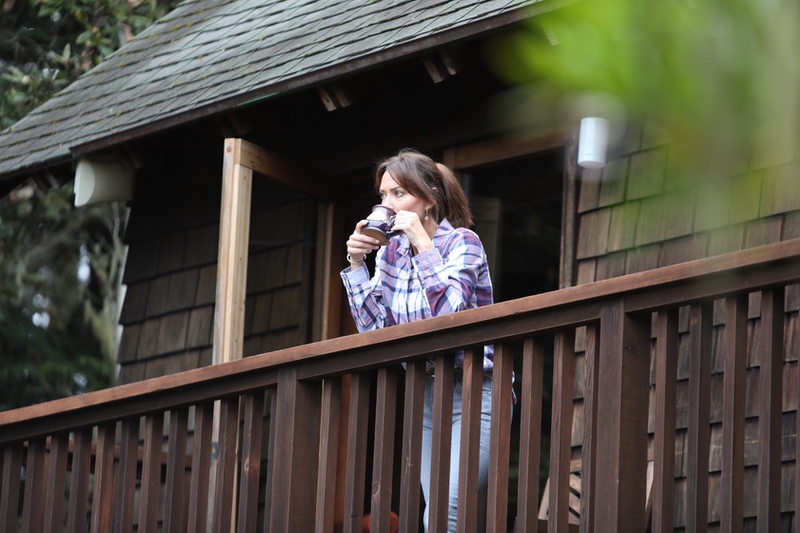
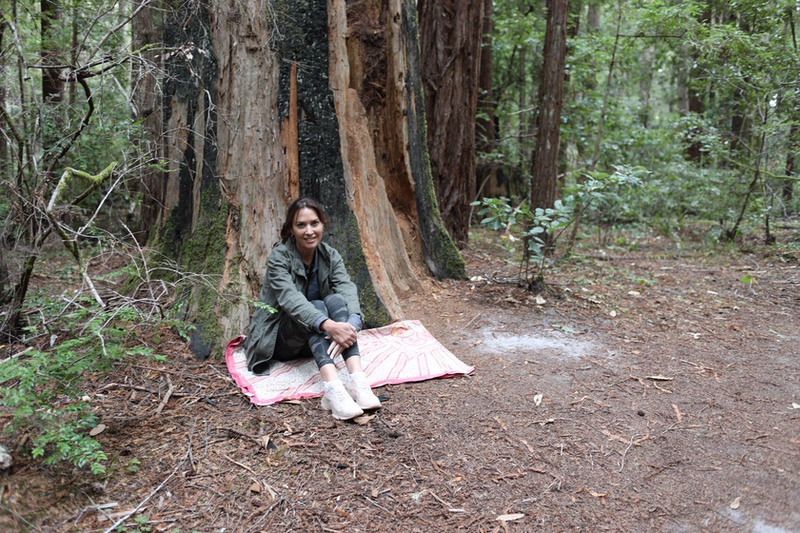
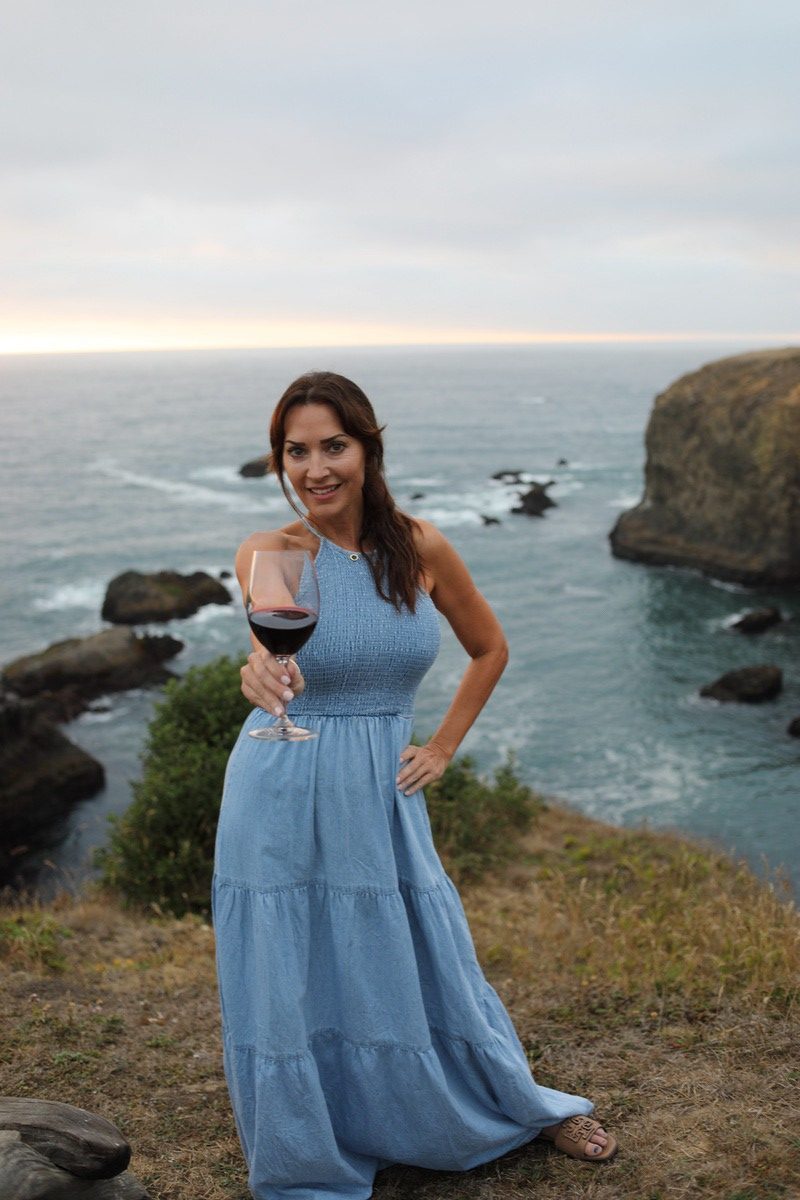
My tour guide Otis Brown is a lifelong resident of the area, from a logging family, with a deep knowledge of its history. He is a masterful storyteller, sharing fasting facts and funny anecdotes. “This was a Victorian-era mining town called Newport between 1860 and 1900. At its peak, over 2000 people lived here. It was one of the earliest and largest communities on California’s lost coast,” Otis says.
We make our way to the council bluffs, a popular spot for wedding ceremonies, on a cliff looking out to the ocean. Here, I experience the power of unspoiled land as Otis spots a carved projectile laid bare in the soil. He surmises the projectile was left by the Yuki Indians, the indigenous people who inhabited this area long ago. “Today, the coastal Yuki Indians are extinct. In the 1800s, the US government set up a reservation called Fort Bragg, 20 minutes north of here, to protect the Yukis from enslavement by loggers and gold miners.
We park and walk down to the edge of a cliff overlooking a cove known as “the secret beach” and admire the waves crashing through the caves and pouring into this sandy alcove. I smell the air hoping to catch a whiff of “whales’ breath,” a fish emulsion scent that permeates the air when whales are nearby. This stretch of coastline is an ideal spot for whale watching, especially during November and February when whales migrate. Whales make their way to the nutrient-rich waters and the cliff bases they use to rub off their barnacles.

The Inn has a working cattle ranch with 300 grass-fed cattle, including Black Angus bulls. Passing through the cattle ranch, we head into the property’s redwood forests. Redwoods thrive in Northern coastal California because they draw nourishment from the fog. I’m visiting in September as the fog rolls in and out several times a day. As we hike the redwoods, my lungs expand with fresh oxygenated air, and I feel invigorated; my mood begins to lift and lighten. Shards of sunlight pierce through the tree canopy illuminating the forest, and the loamy scents of the forest floor fill the air. I’m comforted and soothed by the redwoods’ powerful life force.
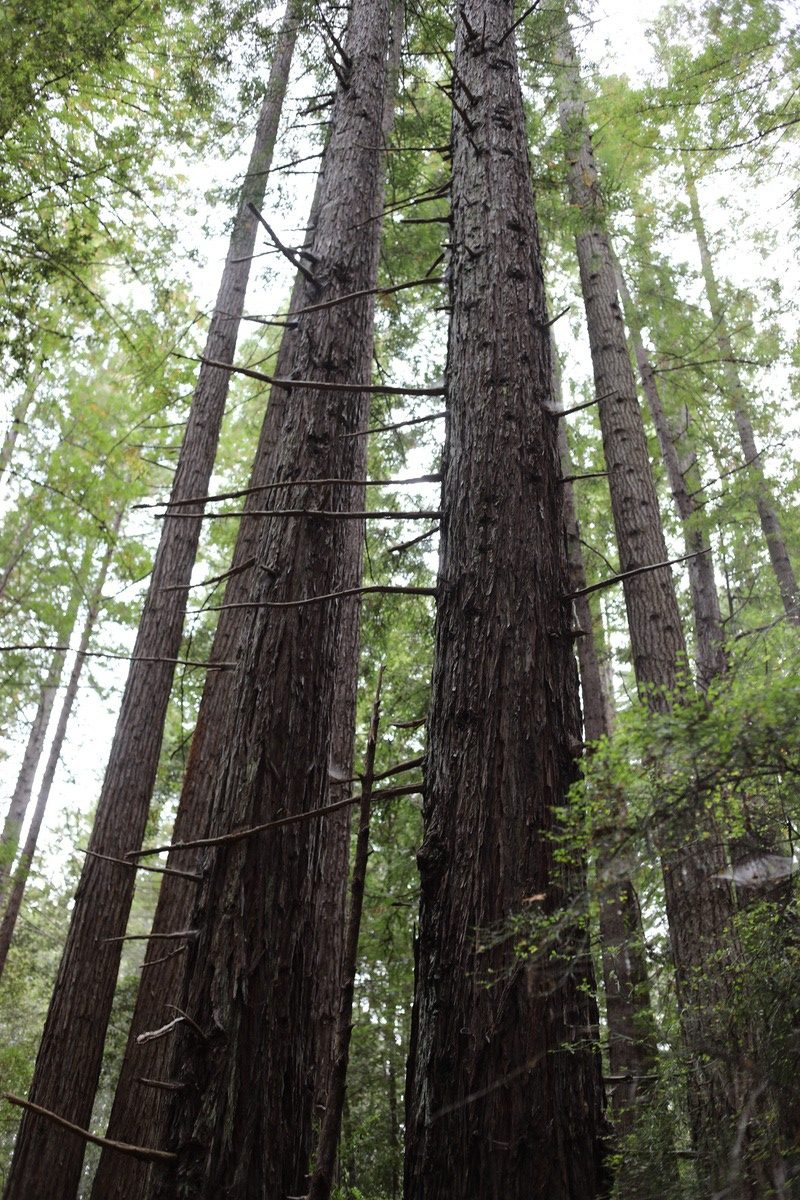
The property’s symbiotic relationship with nature protects and preserves many native plants, including a rare flower known as Farewell to Spring. We return to the Inn for lunch cooked with locally grown ingredients from the Inn’s garden. Otis’ wife, Felicia, is the property’s organic gardener, cultivating fresh produce served at the Inn’s farm-to-table restaurant. The garden invites guests to meander through its winding walkways and soak up the sights and smells of blooming flowers, fresh herbs, and vegetables.
The following day, I head out for a hike along the property’s mile-long coastal cliffside trail to soak up the scenery and watch for whales. Lookout points with benches along the way beckon me to sit with my thoughts, soaking up the land’s energy and topography in a blissful, powerful, intimate encounter with the land.
“Welltality is the new hospitality,” recognizing the need to unplug and reboot our physical and mental well-being. The Brewery Gulch Inn, in the town of Mendocino, embodies this concept of Welltality in its lifestyle recalibration programs. I sign up for the Shinshin Integrated Mind-Body Experience, a day of restorative wellness with holistic practitioner Sara Bassindale. Using my answers from a health intake form she provided, Sara customized my wellness activities for the day-long program. My health intake answers tease out a common issue—stress. I have a lot of it; I’m overstimulated, overworked, and under-rested like many people.
Through dietary changes and mental and physical techniques, Sara will help me reset my nervous system to lower stress. We head to the Zen Hut on the property for a morning of breathwork, energy medicine techniques, and Qigong, a guided meditation to achieve greater body awareness, ending the session with a sound bath. Sara plays instruments sending out soothing vibrations to ground my body and soothe my nervous system, bringing a sense of calm and peace. “Live sound and vibrations through instruments create harmonic patterns in the body because we are vibrational beings. These sound vibrations come in, and help restore and regenerate the cells, creating harmony within the body,” Sara explains.
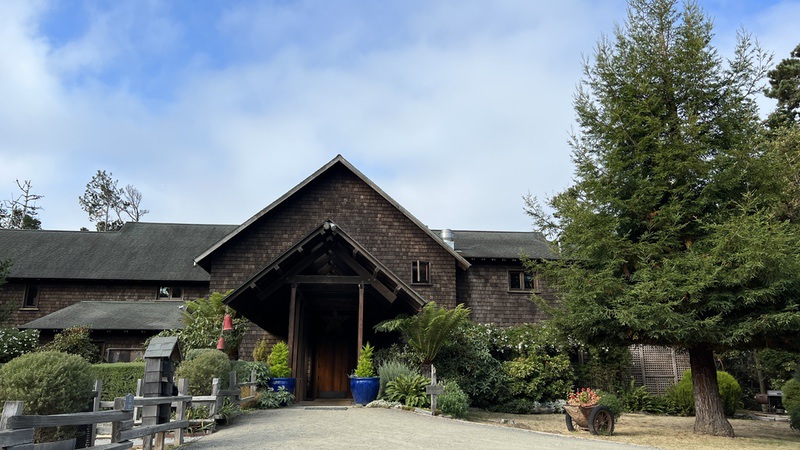
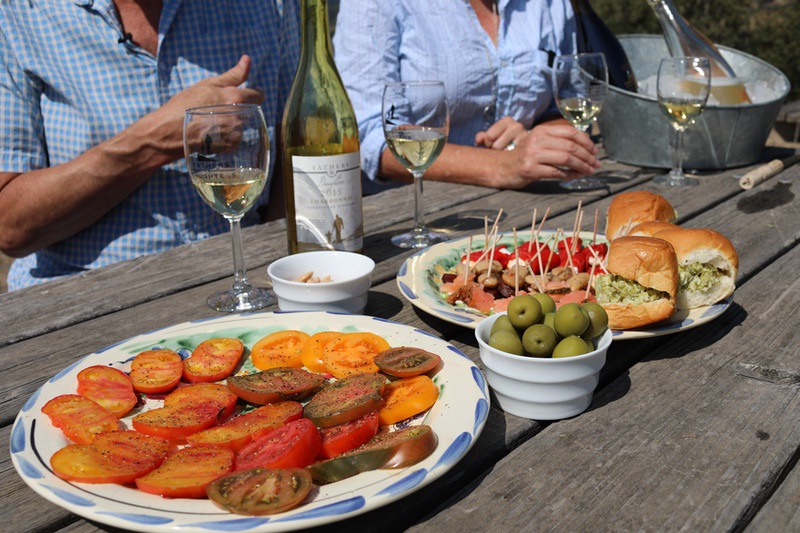
Fathers + Daughters Cellars
After our gourmet, organic lunch prepared by the Brewery Gulch Inn chef, we head into the redwood forests of Van Damme State Park, located three miles south of the town of Mendocino. We spend the afternoon in a restorative activity known as Forest Bathing, a concept the Japanese pioneered in the 80s based on research about nature’s healing benefits. Shinrin Yoku is the Japanese term for Forest Bathing, and it translates as “taking in the forest atmosphere.”
We hike this 1,800-acre park immersing ourselves in nature in a mindful way and engaging all our senses. Along our hike, the forest transitions from the ancient, acidic pygmy terrain, once covered by the sea, to coniferous trees. We leave the scent of blooming huckleberries and move into the cooler air of the redwood forest and the smell of pine. Sara explains that coniferous forest trees emit natural aerosols or oils called phytoncides that they use to communicate with each other and to protect themselves from insects, fungi, and bacteria. “Research shows that when humans are exposed to phytoncides, they experience an increased sense of well-being, peace, calm, and vitality. The trees essentially spark happy hormones improving our sleep, decreasing stress, anxiety, depression, fatigue, and anger,” Sara explains.
As we walk, our bodies entrain or attune to the earth’s vibrations, a healing, restorative frequency that calms the nervous system. “The earth vibrates at 7.83 hertz, and this vibration acts as a soothing, regenerative force. As we walk the forest, our bodies attune to this vibration, dropping into a slower, more gentle frequency which helps reset our nervous system,” Sara explains. In addition, we absorb beneficial bacteria from the natural biome of the forest floor. “As we’re walking, these microbes float around us. We touch them, and we breathe them, bringing positivity into our energy field and boosting our immune system,” Sara says.
On our hike, we engage our senses through a series of meditations. We sit down at a large, hollowed-out redwood stump still giving life to the plants and little trees growing around it. Sara prepares a tea of redwood needles that we sip in silent reflection. Forest bathing is a way back to my being as I learn more about our biological need to connect with nature. At the end of our hike, we approach a large stump, my cue to venture off alone and explore the forest in silent reflection, fully present with my emotions and thoughts.

We return to Brewery Gulch Inn in time for wine and appetizer hour, serving up locally produced wines and snacks in a redwood bento box crafted by a local woodworker. After dinner, Inn employees head home, leaving guests full access to the Inn. Some gather around the firepit to sip wine and share stories. Others opt to linger on the deck and watch the sun dip into the ocean or, depending on the temperature, congregate around the massive fireplace in the great room. The Inn offers a retreat and the perfect dose of social interaction. As a Design Tourist, I appreciate its architectural and décor details, including the virgin redwood timber throughout the inn, salvaged from Mendocino River. The ten-room Inn, one mile south of the town of Mendocino, sits on three acres surrounded by redwoods and pines, overlooking the Pacific Ocean and Smuggler’s Cove, and is an ideal home base to explore the region.
The guest experience at this Craftsman-style redwood-shake Inn is like staying at a luxurious treehouse summer camp. My room drinks in the coastal light and opens to a redwood deck overlooking the cliff-rimmed coastline. In the evenings, I sit on my balcony at sunset, breathing in scents of coastal spruce and pine trees and watching the woodpeckers and blue jays frolicking around the bird feeder below. Each morning, I wake up to a cooked-to-order breakfast made with locally grown, organic ingredients.
Mendocino is known as “America’s Greenest Wine Region,” with more than 90 wineries and the highest percentage of organic and biodynamic vineyards in the United States. I end my trip with visits to two Anderson Valley vineyards, Lula Cellars, and Fathers + Daughters Cellars. Anderson Valley’s wine-producing terroir spans 30 miles west to the Pacific Ocean, with a unique microclimate perfectly suited for growing world-class Pinot Noirs.
The vineyard tours and wine-tasting experiences offer a casual, intimate alternative to the Napa and Sonoma Valley excursions. Most wineries in the region are boutique producers, such as Fathers + Daughters Cellars. The wine label launched its inaugural Ella’s Reserve Pinot Noir, named after the owner’s daughter. Fathers + Daughters Cellars grows its grapes in the Ferrington Vineyard, spanning 120 acres with 80 acres under vine. Fathers + Daughters doesn’t advertise or promote its wine-tasting experiences; you go because you are in the know.
On the day I visit, owner Guy Pacurar and his wife, Sarah, greet me with a glass of sparkling wine called Sarah’s Rustic Bubbles, made from Chardonnay grapes using the Pétillant naturel method. We toast and sip this sparkling wine with a hearty texture and smooth floral nose.
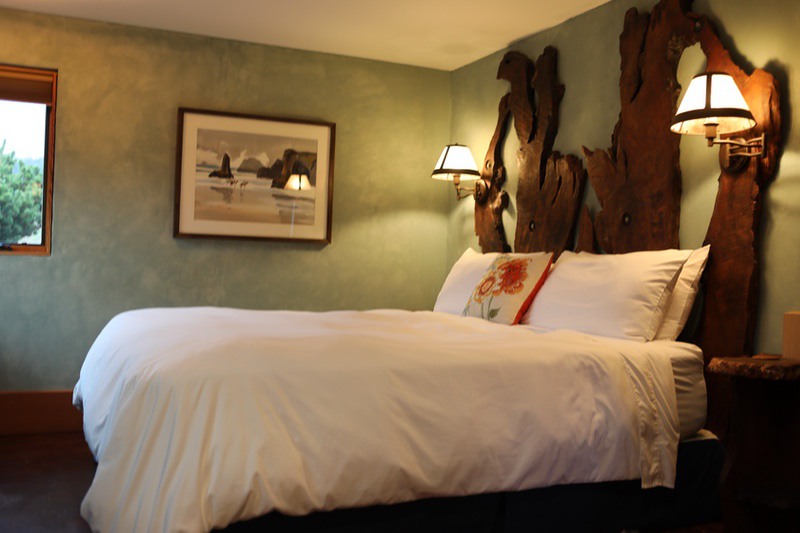
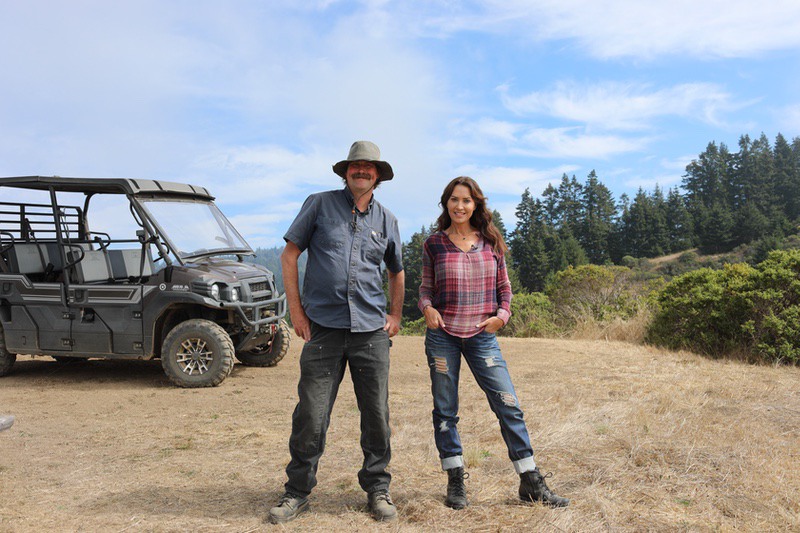
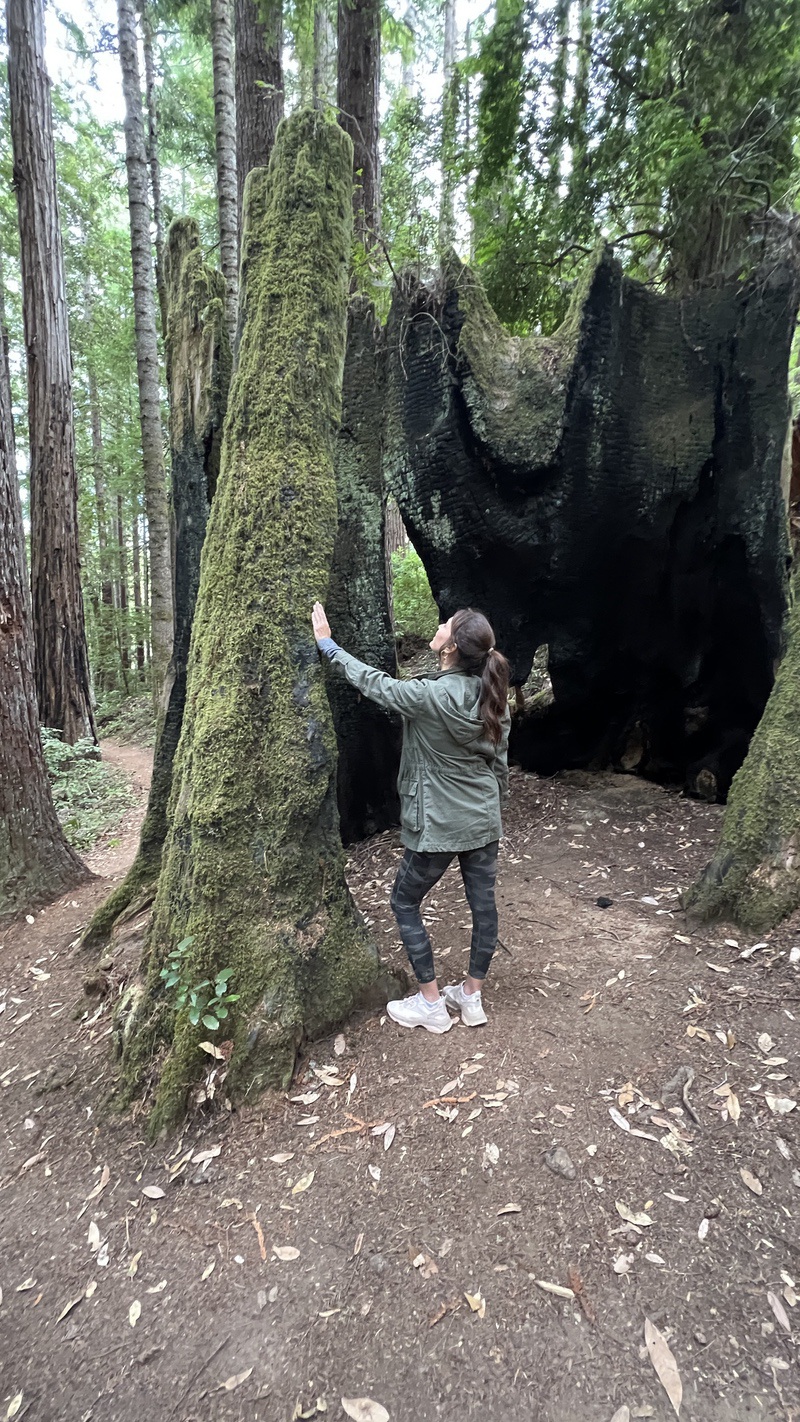
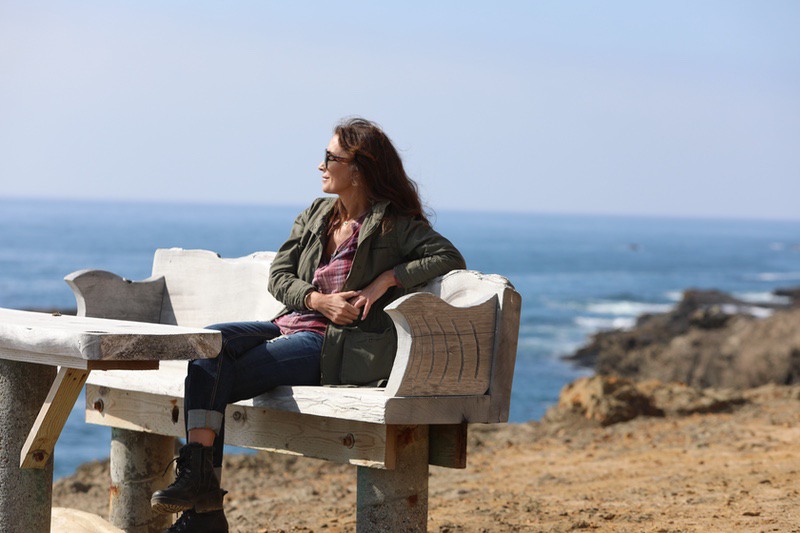
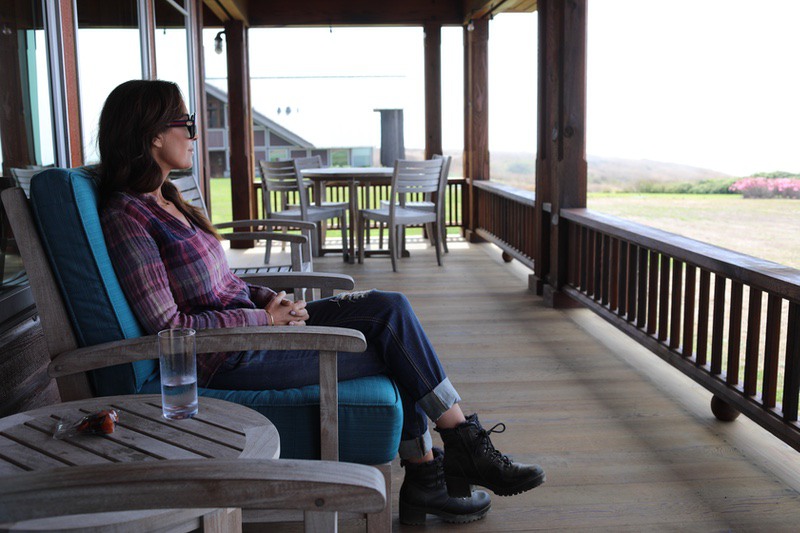
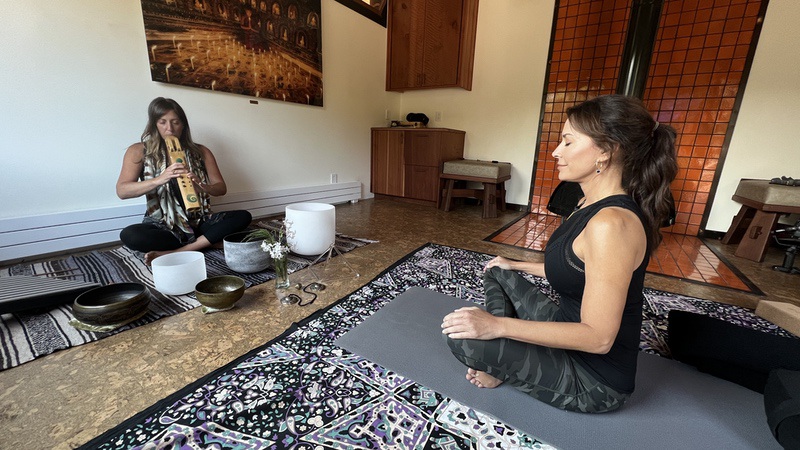
We head up to the vineyard bluff in an ATV, their dog running alongside, as we wind through the rows of grapes. Guy and Sarah bring an ice chest packed with appetizers and wine. Fathers + Daughters Cellars wine tasting room is a picnic table at the top of Mendocino Ridge with a panoramic view of Anderson Valley. We uncork a pearlescent pink rose, a Sauvignon Blanc. “We make all of our wines so you can lay them down, which is unique in winemaking,” Guy explains, as we snack on a spread of Spanish tapas catered by Disco Ranch in nearby Booneville. “We blend all of our whites in stainless steel and neutral oak barrels, so they don’t get that heavy, buttery, oak finish typical of many Chardonnays.” Winemaker Phil Baxter Jr. works with varietals, including Pinot Noir, Sauvignon Blanc, Chardonnay, and Gewürztraminer, to produce wines by Fathers + Daughters Cellars. Guy and Sarah want guests to experience their wines from the source, so they offer small, intimate outdoor wine tastings on the bluff. “We don’t publicize our tastings. These are small, curated experiences requiring advance notice to organize. We don’t host mass wine tastings because we want to get to know the people who visit us,” Guy says.
I also visited Lula Cellars, a boutique winery in the town of Philo, approximately 2 ½ hours north of San Francisco. It’s time for the 2022 grape harvest, and Lula’s vines are bursting with luscious purple, plump grape clusters, just days away from picking. Lula Cellars resides in the “Deep End” of Anderson Valley, known for producing world-class Pinot Noirs, benefitting from the cool Pacific Ocean breezes.
Lula Cellars produces 5000 cases annually and has 15 acres of planted grapes; 14 acres grow Pinot Noir, and one acre cultivates the Gewürztraminer strain. I set out on a tour of the vineyards with General Manager Chris Lanier. We head up the hill passing “The Rescue Block,” which refers to grapes grown from the vineyard’s original 1000 vines discovered in 2012, the only viable vines in what was then fallow soil. “We grow about half of the grapes from which we make all our wines, and the rest, we buy from other vineyards in the Anderson Valley or Mendocino County,” Chris says.
Grape pickers work overnight when the temperatures are cooler and ship out the grapes at dawn. By mid-September, Lula Cellars finishes picking its grapes, replants the vines in November, and bottles its wines in July. We end our tour with an alfresco wine tasting at the property’s pet-friendly outdoor tasting room with sweeping views of the vineyard. Dan Reed, wine tasting room manager, uncorks a Gewürztraminer, an Alsace variety white wine with spicy, citrus, stone, and floral notes. Next, I taste a Rose Pinot Noir, a salmon pink wine with hints of rose petals and red berry fruits with a crisp and clean finish. I end with two $50 bottle wines: Costa and Peterson, the grapes from two vineyards less than a mile apart, both earning high marks but with distinct flavors from the earth. Costa tastes organic, while Peterson has a mineral finish. We toast the 2022 harvest by holding up a glass of Pinot Noir reflecting the orange glowing prism of the setting sun. It was a fitting end to a blissful day of good conversation, great wine, and new friends.
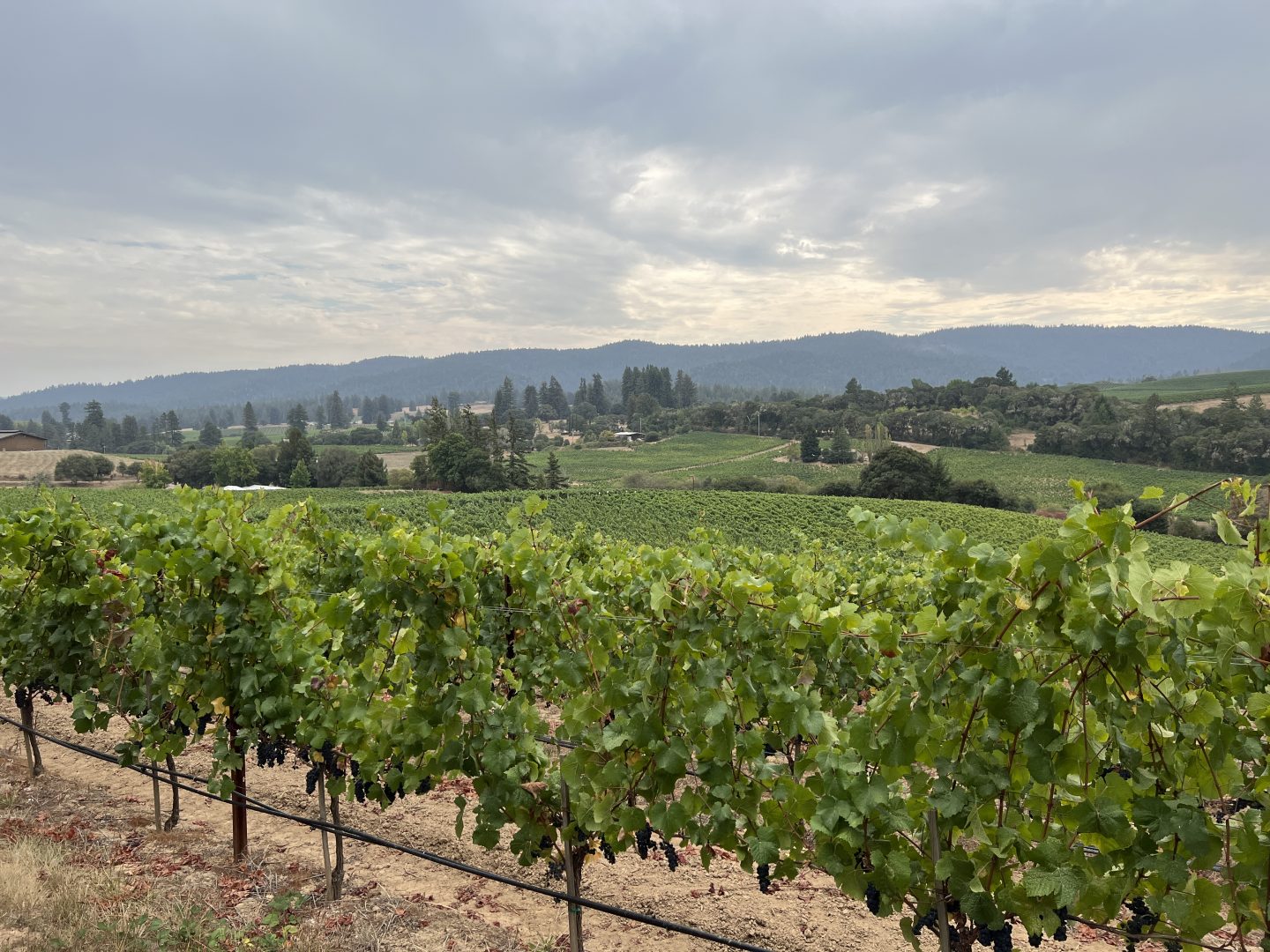
Before I say goodbye to Mendocino County, I want to experience redwood forests from another vantage point, riding rail bikes along the Skunk Train railroad. In the late 1800s, the Skunk Train carried redwood logs to the sawmills. The heritage train gets its name from the pungent smell of the engines. Today, the Skunk Train is a source of local pride, with special events and themed rides throughout the year.
The rail bikes depart from Fort Bragg, a 15-minute drive north of Mendocino. These two-person motorized bikes run along the Skunk Train tracks through estuaries and the redwood forests, a 7-mile round trip. We head deep into the redwood forest, invigorated as we pedal by the cooling breeze, oxygen-rich fresh air, and earthy, spicy scents. I take in the stillness of the forest, peering up into its multilayered canopy and down at the fairy-ring root systems circling the base of these towering trees. We park our bikes at a depot along the way and hike through the redwoods with our guide, who entertains us with funny jokes and interesting factoids. I return to the station with a priceless souvenir that sparks joy—a new perspective on my way of being in the world, a salve for the soul the forest gifted me.
My trip to Mendocino was an intentional escape from the chaos of daily life. I’m a big believer in energy. Mendocino’s grounding, restorative power sends me home with a better sense of life balance. I return rejuvenated, recalibrated, and reconnected with my mind, body, and soul. To learn more about Mendocino’s natural attractions, watch episodes of The Design Tourist streaming on all major networks and available on youtube.com/thedesigntourist.
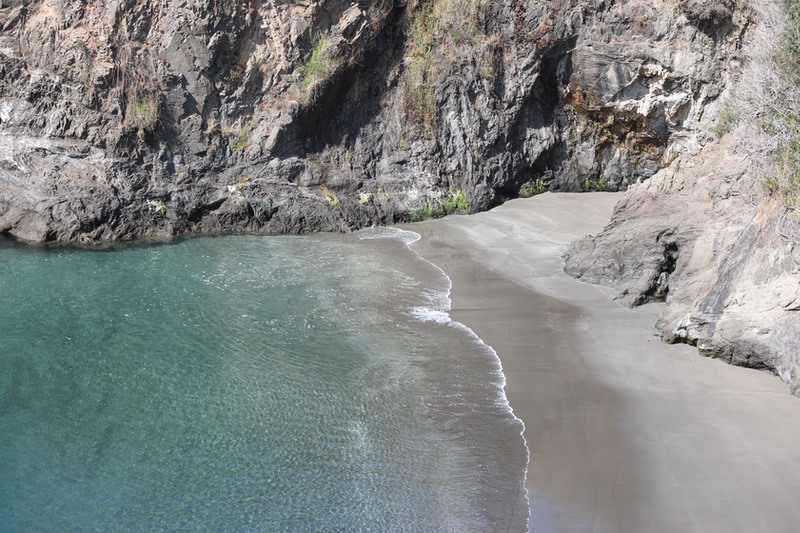
Article By: Karen LeBlanc, aka The Design Tourist @TheDesignTouristShow
Images provided by photographer Ryan Hamilton
- Exploring the Paths Less Traveled in Iceland - May 4, 2024
- Exploring Egypt From Cairo and Up the Nile - May 16, 2023
- MENDOCINO, CALIFORNIA : A DOWN TO EARTH DESTINATION - March 3, 2023
